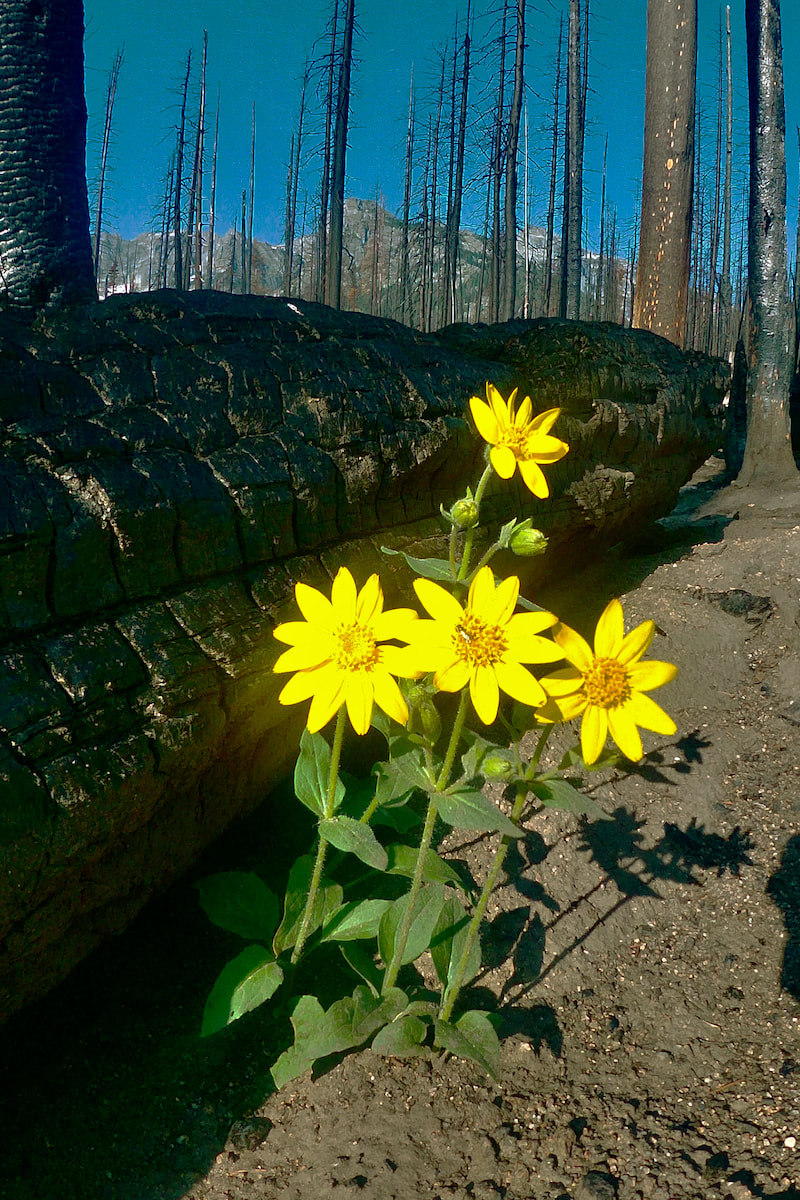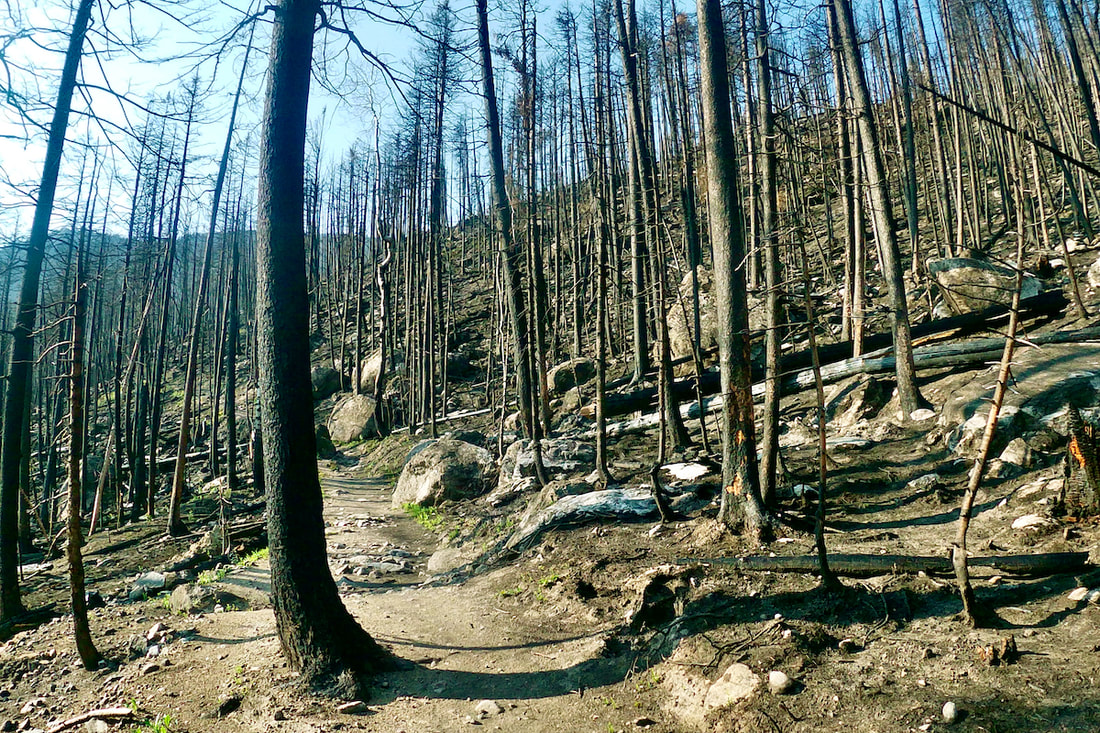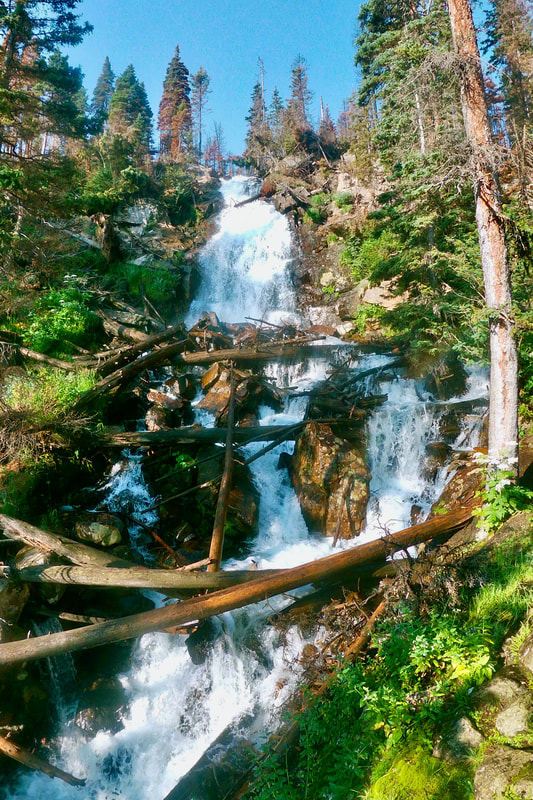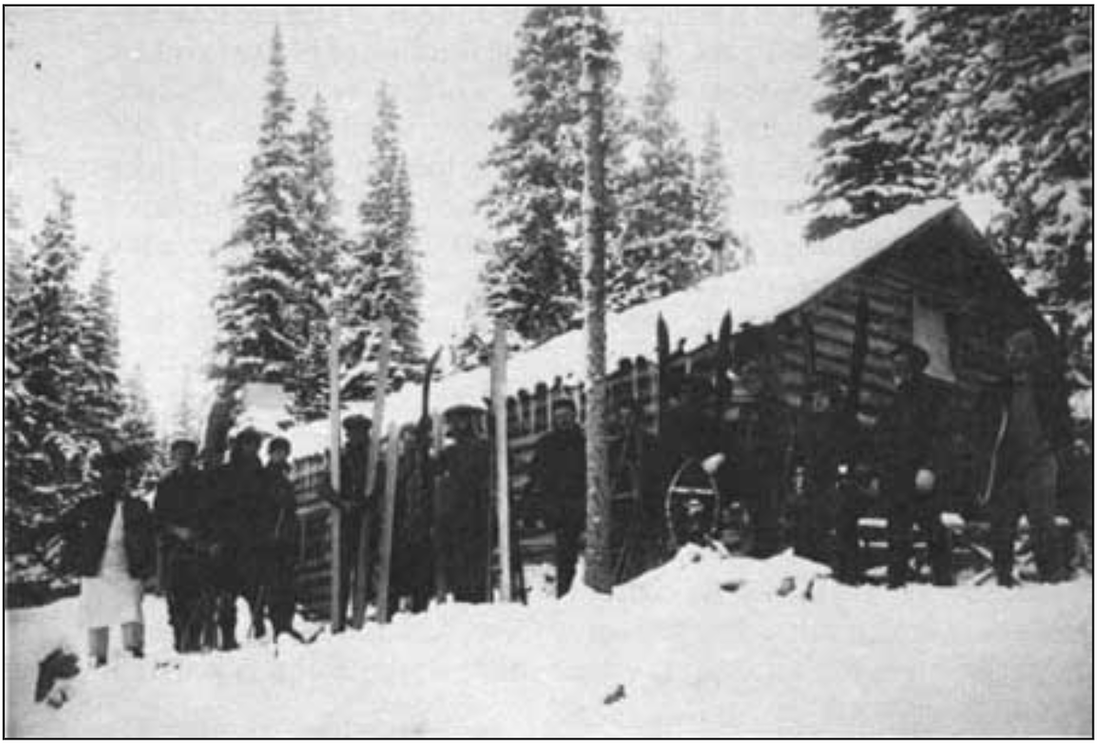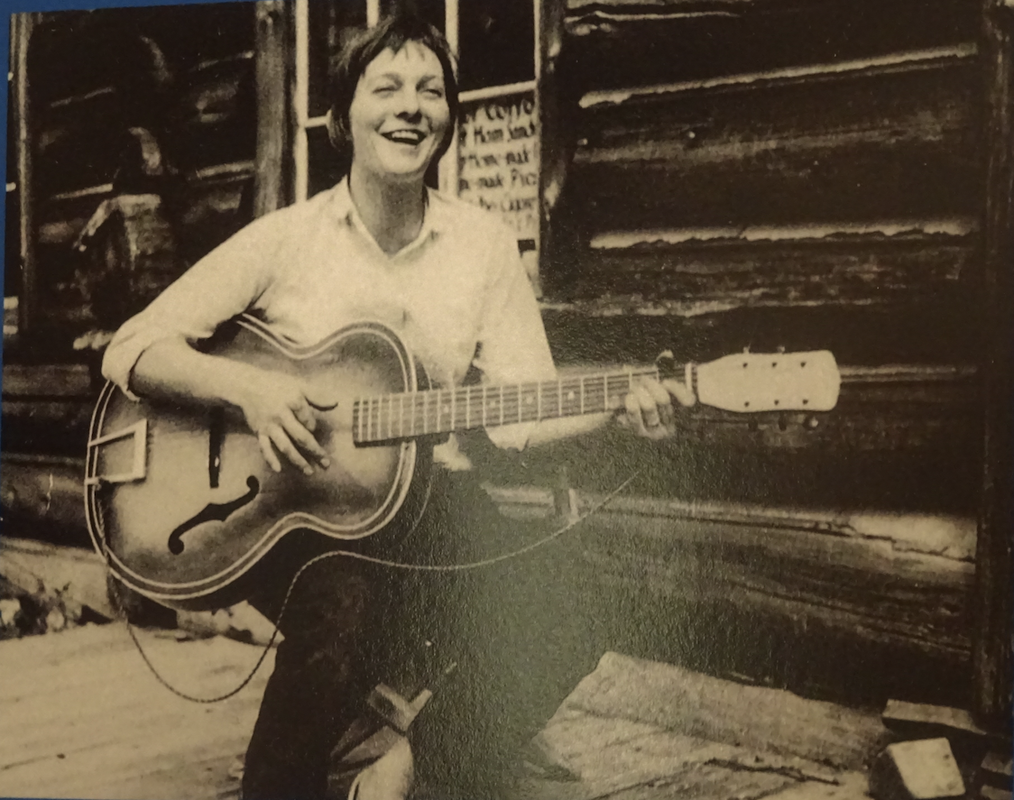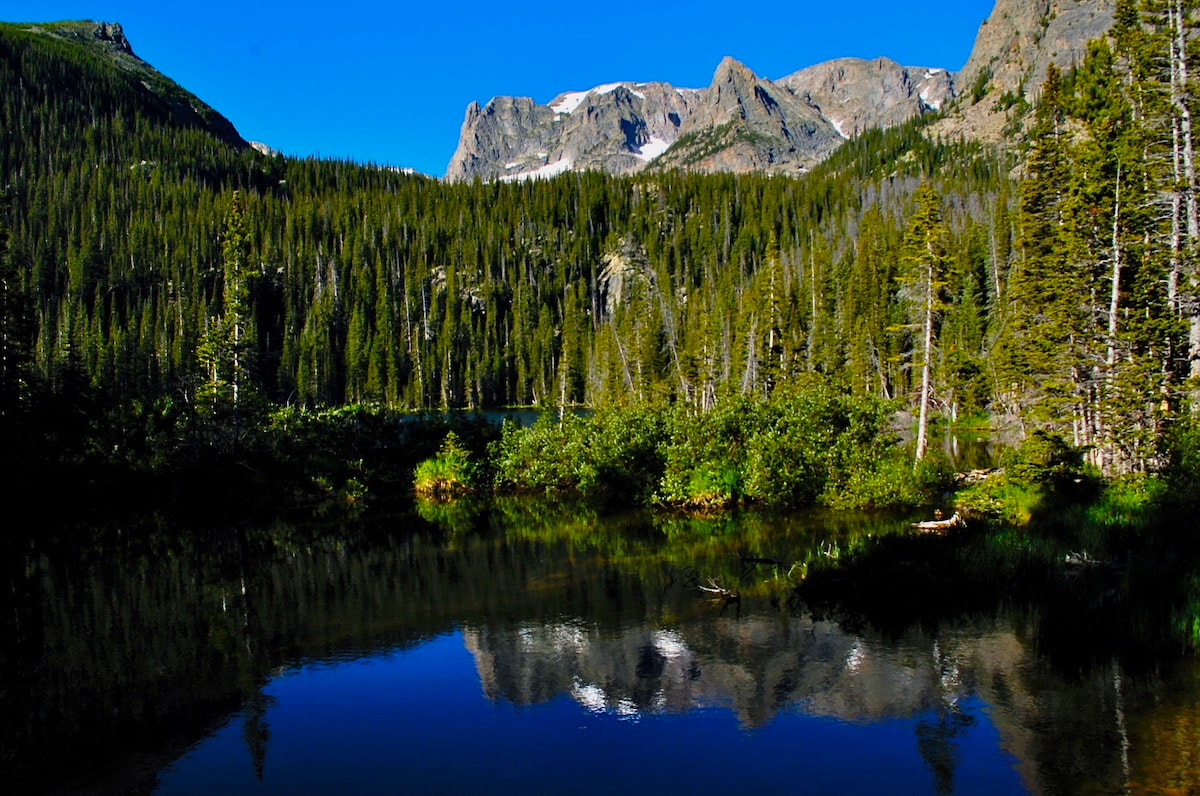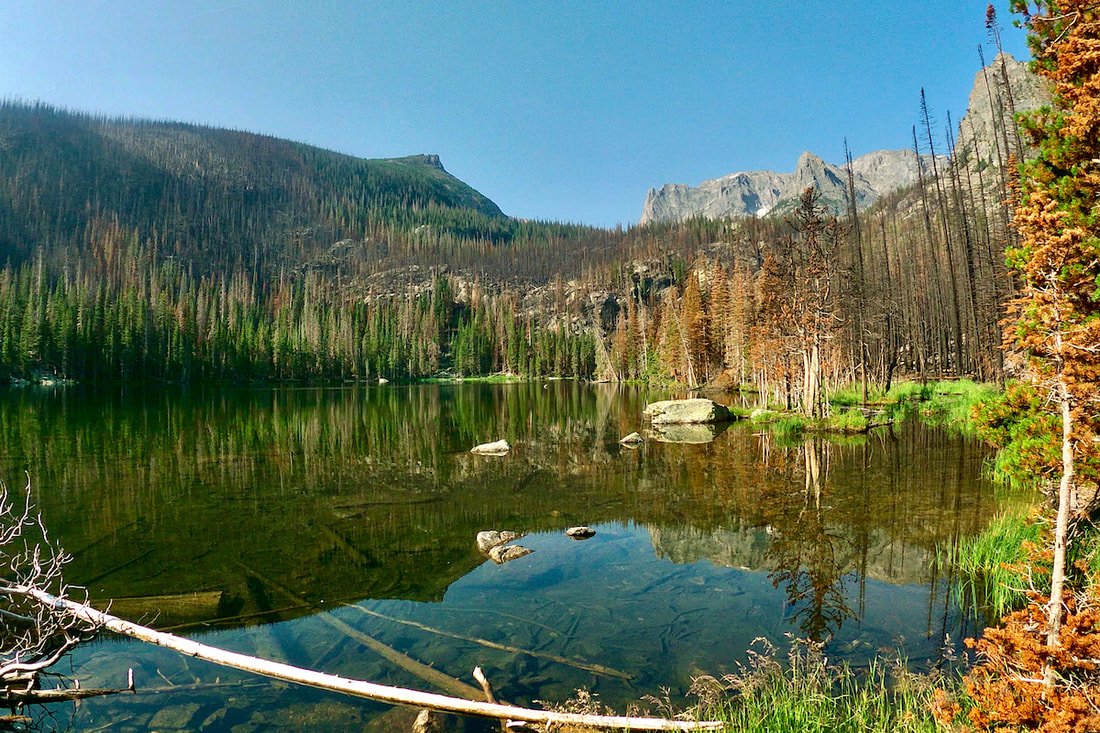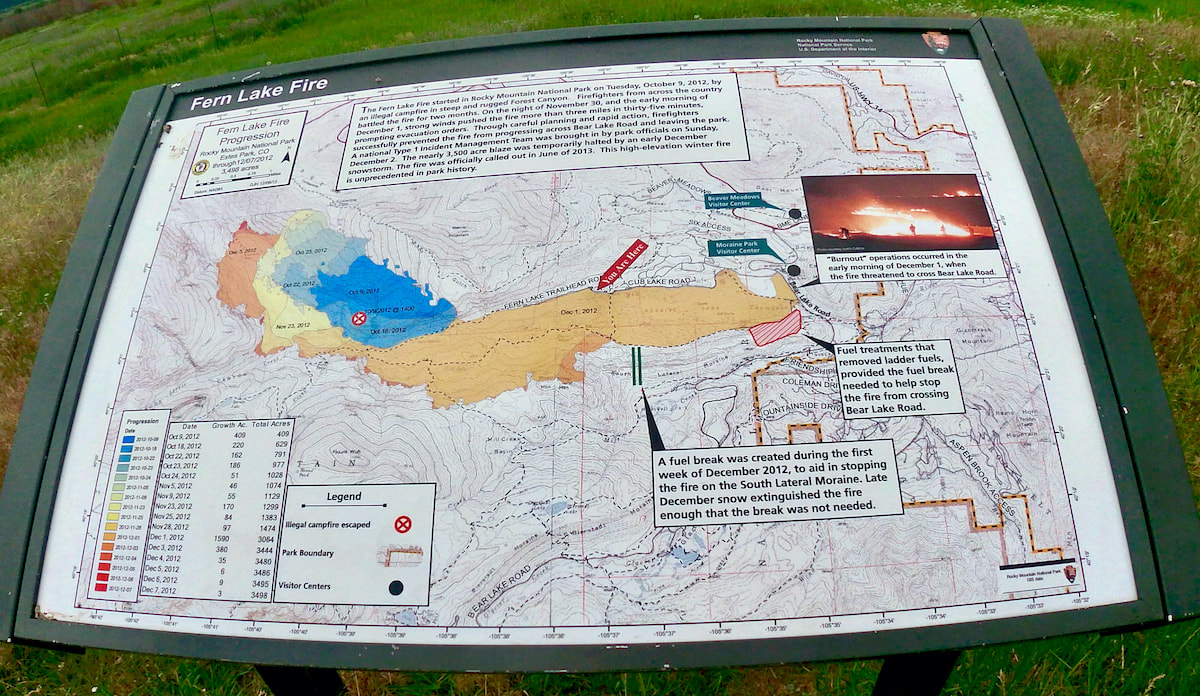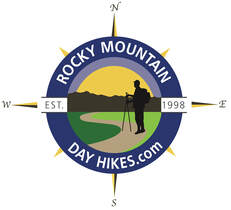|
Notes from the
Trail |
|
What month is this? August? But it’s so cool and moist and green. However, there are signs that we are getting into the latter part of summer. The chartreuse green of spring aspen leaves have darkened to a deep emerald, large and shimmering in the summer breeze, while the tall grass sway with ripening seed-heads. I have observed the transition into late summer wildflowers and watched the streams lose their torrential flow. Lately, the weather pattern has brought us a heavy layer of California wildfire smoke, which is a strange mix with the cool moisture. Other than the hazy skies, it feels like a normal summer, which seems abnormal compared to other parts of the west this year. Is it even possible we might make it through the rest of the summer without some sort of cataclysmic event?
Fern Lake is a moderate 3.8 mile hike. While much of the hike sees a gradual increase in elevation, there is about a mile and a half in the second part of the hike where the trail switchbacks up a north facing slope, with Fern Falls midway at one of the switchbacks.
Once the trail begins its steady climb across the north facing slope, I remembered the shaded spruce and pine woodland environ with sun filtering through onto open forested terrain with a low growing but rich ground covering. I remembered how tall and slender the trees were with downed timber rotting and adding organic material to the thin soil. This was a favorite stretch of the trail for me. I walked up the slope in silence, overcome by how barren the landscape looked. Charred trees stood with bare branches, devoid of life. The morning sun blasted through, baking the ground. The ground lacked any cover, excepting for occasional patches of blooming Arnica, their happy yellow flowers loving the sun but seemingly out of place. I make the turn at the first of three switchbacks and follow the trail east and towards Fern Falls. I’ve been curious to see how barren thing would look around one of the Park’s few notable waterfalls. The falls were always a fine respite mid-way up this part of the trail with the cool misty spray from the falls refreshing the laboring trail traveler. I feared something of its charm would be gone.
Walking silently along this last stretch of the trail before reaching the lake, I thought about the storied history of this trail dating back a little over a hundred years ago. This trail is one of many trails in the Park that qualify under the National Register of Historic Places. Back in the very early 1900’s, tourism was at its beginnings in the region. A newly formed Estes Park Protective and Improvement Association was constructing a permanent trail to Fern Lake. By 1910, Dr. William Workman was busy building a Lodge at Fern Lake and by the 1920’s, the Colorado Mountain Club made annual winter trips to the Lodge. The local newspaper, the Estes Park Trail, reported in March, 1925 that as many as 100 CMC members were showing up for a “ten day frolic in the snow” using the lodge as a base. Ski runs and jumps were reported built for many of these events. That same year, a Park Patrol cabin was built adjacent to the lodge.
“Our memories float over the spring run-offs and the sunsets and sunrises as hikers take to the mountains to see the Columbines and Paintbrush, the leaping trout and the nutcrackers and Rocky Mountain bluebirds,” Ms. Collins recalled that summer in a 2016 facebook post. “The Lodge where we worked, I baking bread and pies on a wood stove and slept down on the river bank, are all gone, but the memories live on.” The Lodge closed for good the following year and sat vacant except by vandals before the Park finally removed it in 1976. Only the 1925 Patrol Cabin remained, and now that too is gone, one of the many casualties the Park endured from the East Troublesome Fire last October. Finally having reached the lake and standing in the very place where the Lodge once stood, I could see how the path of the fire split and pushed around the lake with one leg of the fire coming in from the northwest, engulfing the Patrol Cabin, and then skirting the western shoreline before racing east across the hillside that separated Fern Lake from Odessa Lake and heading up Mt Wuh, leaving the south and east shoreline mostly untouched. I wandered down to the footbridge that crosses the outlet stream. Standing in the middle, I gazed into the clear mountain water of the little outlet pool surrounded by green vegetation and reflecting Notchtop Mtn above. The view across the lake was a mix of green and brown/black, but still an inspiring view. I decided to hike the additional 0.7 miles to Lake Odessa. Walking through another charred section of the trail, I observed the trail work that the Park described in their Historic Places report as, “some of the largest and most complex rock walls in the park and utilized Civilian Conservation Corps (CCC) labor.” What a relief when I finally I crossed out of the fire zone and back into beautiful subalpine terrain, walking along a cascading mountain stream with lush green ground cover and green forested hillsides spectacularly framing Notchtop on the path to Odessa Lake. Snacking on the lake shore along with other hikers that had dropped into this paradise on the trail from Bear Lake, I took in the quiet, watching small wispy clouds float along. This was truly Rocky Mountain splendor.
0 Comments
Leave a Reply. |
"The wild requires that we learn the terrain, nod to all the plants and animals and birds, ford the streams and cross the ridges, and tell a good story when we get back home." ~ Gary Snyder
Categories
All
“Hiking -I don’t like either the word or the thing. People ought to saunter in the mountains - not hike! Do you know the origin of the word ‘saunter?’ It’s a beautiful word. Away back in the Middle Ages people used to go on pilgrimages to the Holy Land, and when people in the villages through which they passed asked where they were going, they would reply, A la sainte terre,’ ‘To the Holy Land.’ And so they became known as sainte-terre-ers or saunterers. Now these mountains are our Holy Land, and we ought to saunter through them reverently, not ‘hike’ through them.” ~ John Muir |
© Copyright 2025 Barefoot Publications, All Rights Reserved




